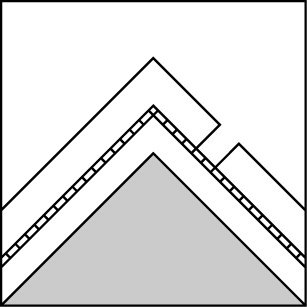Basic Information
Observation Details
Observation Date:
January 28, 2020Submitted:
January 28, 2020Observer:
SAC - DavisZone or Region:
Soldier and Wood River Valley MtnsLocation:
Warm Springs Drainage to Dollarhide SummitSigns of Unstable Snow
Recent Avalanches?
None ObservedCracking?
None ExperiencedCollapsing?
None ExperiencedSnow Stability
Stability Rating:
GoodConfidence in Rating:
ModerateStability Trend:
SteadyBottom Line
There's plenty of snow to blow around at middle and upper elevations. A substantial wind event could quickly add wind slabs to the problem list. The only obvious layer of concern in this area was weak snow at the ground on both south and north aspects.
Advanced Information
Weather Summary
Cloud Cover:
OvercastTemperature:
28FWind:
Light , WLight to moderate snowfall for the majority of the day. There were a couple of short breaks in precip that would occasionally let some sun through. No wind at middle elevations, light wind along Dollarhide Summit ridge. Very little snow moving with ~20-25 cm available for transport. 6-8 cm (~3 in) of new today by 3PM.
Avalanche Observations
Some fresh roller balls from a brief window of sun around midday but not enough heat to cause true wet loose.
Snowpack Observations
The Dollarhide area is one of the deeper portions of the Soldier and Wood River Valley Zone. Snow depths from middle and the lower edge of upper elevation ranged from 70 to 130 cm in sheltered terrain.
20-25 cm of recent snow sits atop a crust on sunnier slopes. The bond at this interface was good in both sheltered and wind-affected areas where I looked. There's a thin, widespread rime layer just beneath today's snow.
The midpack on both S and N-facing slopes was uniform and lacked any obvious weak layers. The hardness varied from 4F to 1F- depending on location.
The lower 1/4 of the snowpack on both S and N was comprised of facets and depth hoar. On S-facing slopes this layer was harder (4F to 4F+), thinner, and moist (near the ground). On N-facing slopes the facet layers were thicker and drier.
Avalanche Problems
| Problem | Location | Distribution | Sensitivity | Size | Comments |
|---|---|---|---|---|---|
 Persistent Slab
Persistent Slab
|
|
Layer Depth/Date: 50-100 cm + Comments: Facets and depth hoar in the lower quarter of the snowpack. This layer is now ~1m deep in N-facing middle as well as upper elevations. I wasn't able to find the perfect recipe of a thin snowpack (accessible weak layer) and a stiffer well connected slab. The slabs all felt weathered and faceted where the snowpack was thin. |
Sunday night and into Monday's snowfall had been moved into drifts up to 30 cm in some exposed locations but seemed well bonded where I encountered them. This snow is still untouched in many areas, and combined with today's snowfall provides 20-25 cm of relatively low-density snow available for transport.
Terrain Use
I planned to avoid freshly wind-loaded avalanche terrain and didn't really find any of concern. Solo travel on a new route and poor light kept me from poking into anything steeper.
